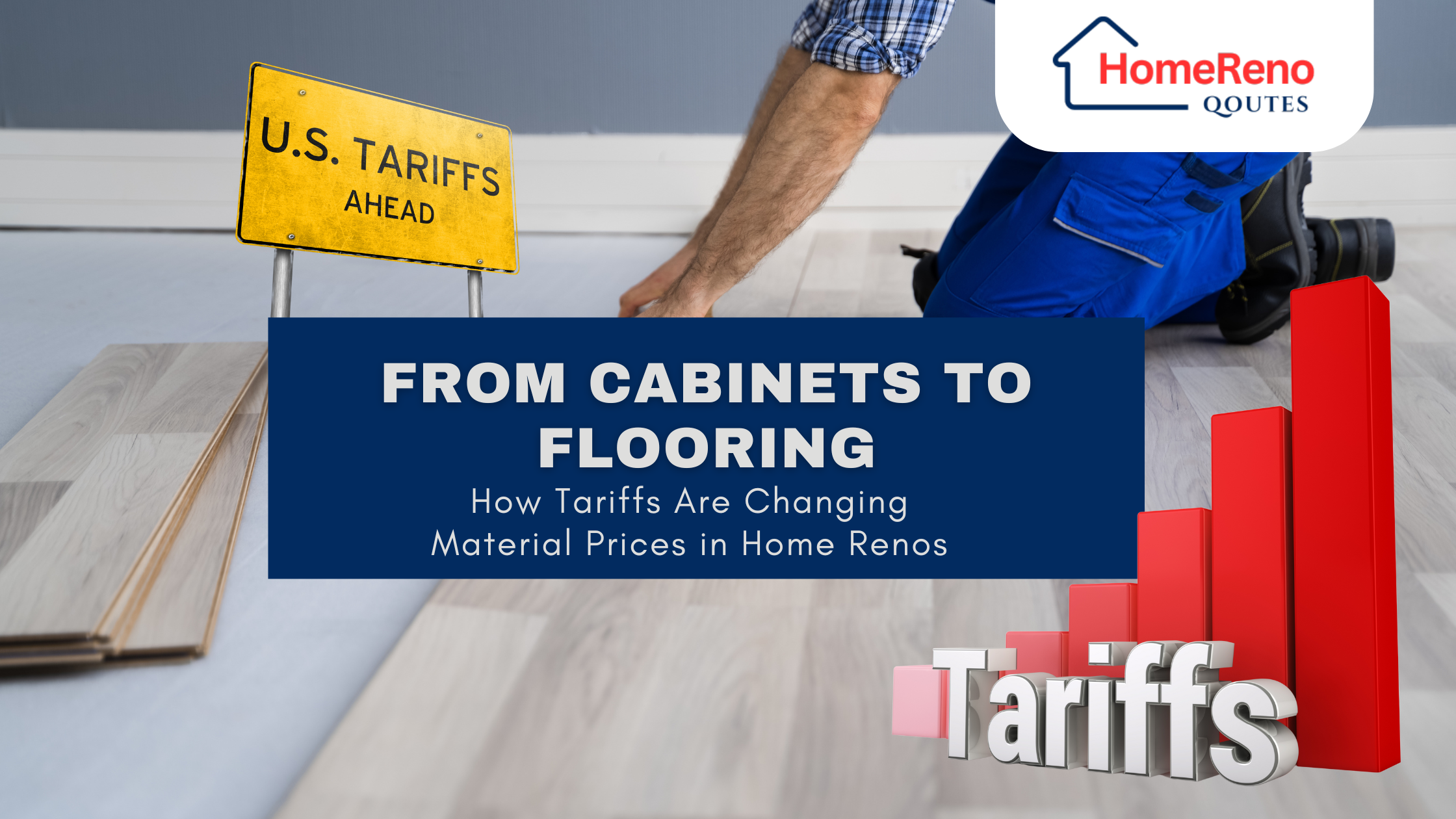Planning a home renovation?
You might be in for a sticker shock. Global tariffs and trade tensions are driving up the cost of key renovation materials—from cabinets and countertops to flooring and fixtures. What was once a straightforward budget calculation now requires factoring in trade wars, supply chain delays, and fluctuating material costs.
In this blog, we’ll break down:
- Which renovation materials are hit hardest by tariffs (and why)
- Real price increases homeowners and contractors are facing
- Alternatives and strategies to keep costs under control
- Expert predictions on where prices are headed
Whether you’re remodeling a kitchen, updating a bathroom, or building an addition, understanding these cost drivers can help you plan smarter and save money.
The Big Picture: How Tariffs Impact Renovation Materials
Tariffs—taxes on imported goods—are imposed for various reasons, from protecting domestic industries to retaliating in trade disputes. While they might benefit some manufacturers, they increase costs for consumers, especially in industries like construction that rely on global supply chains.
Canada imports a significant portion of its building materials, meaning tariffs on goods from the U.S., China, and other countries directly impact renovation budgets.
Read – Impacts of Trump Tariffs on Canadian Residential Construction Sector

Materials Most Affected by Tariffs (and How Much More They Cost)
1. Cabinets & Countertops
- Tariff Impact: U.S. and Chinese tariffs on wood, laminates, and stone.
- Price Increase: 10-25% over the past two years.
- Why? Many cabinets and countertops use imported hardwood, MDF, and quartz, all subject to trade disputes.
- Alternative: Consider Canadian-made cabinetry or butcher block countertops (if hardwood tariffs are an issue).
2. Flooring (Hardwood, Engineered Wood, Laminate)
- Tariff Impact: U.S. tariffs on Canadian softwood lumber (averaging 11-20%).
- Price Increase: Hardwood flooring up 15-30%, engineered wood up 10-20%.
- Why? Canada exports lumber to the U.S., but tariffs reduce supply and drive up domestic prices.
- Alternative: Bamboo, luxury vinyl plank (LVP), or cork flooring (less affected by lumber tariffs).
3. Steel & Metal Products (Nails, Beams, Appliances)
- Tariff Impact: U.S. 25% steel tariff and global supply shortages.
- Price Increase: Structural steel up 20-40%, appliances up 10-15%.
- Why? Even though Canada has some exemptions, global demand keeps prices high.
- Alternative: Look for recycled steel or Canadian-made metal products.
4. Plumbing Fixtures & Electrical Components
- Tariff Impact: Chinese-made faucets, sinks, and wiring hit by U.S. tariffs.
- Price Increase: Fixtures up 10-20%, electrical parts up 5-15%.
- Why? Many brands manufacture in China, and tariffs add to import costs.
- Alternative: European or North American-made fixtures (though often pricier).
5. Windows & Doors
- Tariff Impact: Aluminum and glass tariffs (from U.S.-China trade war).
- Price Increase: Up 10-20% for premium windows.
- Why? Aluminum frames and tempered glass face higher costs.
- Alternative: Fiberglass or vinyl windows (less metal-dependent).
The Real Cost to Homeowners & Contractors
- A kitchen renovation that cost 30,000 in 2020 could now exceed 40,000 due to pricier cabinets, countertops, and labor.
- Flooring projects have seen some of the steepest increases—especially for hardwood.
- Contractors are quoting higher prices or delaying projects to wait for material costs to stabilize.
Case Study: The Lumber Price Rollercoaster
- Early 2021: Lumber prices spiked 300% due to tariffs and pandemic shortages.
- 2023: Prices dropped but remain 40% higher than pre-pandemic levels.
- Today: Volatility continues due to U.S.-Canada softwood lumber disputes.
Read – Trump tariffs could add more than $9,000 to cost of a new home, builders say
How to Renovate Without Breaking the Bank
1. Prioritize Local & Tariff-Free Materials
- Canadian-made wood, steel, and fixtures avoid some import taxes.
- Check labels for country of origin before purchasing.
2. Consider Alternative Materials
- Instead of hardwood floors → Try LVP (luxury vinyl plank) or laminate.
- Instead of granite countertops → Explore quartz or solid surface materials.
3. Buy in Bulk or Time Your Purchase
- Contractors can lock in prices by ordering materials early.
- Homeowners can wait for seasonal sales (e.g., Black Friday for appliances).
4. Phase Your Renovation
- If budgets are tight, split projects (e.g., cabinets now, countertops later).
Will Prices Go Down Soon? Expert Predictions
- Lumber: Prices may stabilize but will remain higher than pre-2020 levels.
- Steel & Appliances: Global demand keeps costs elevated.
- Fixtures & Cabinets: If U.S.-China tensions ease, prices could drop slightly.
Bottom line: Budget 10-20% extra for unexpected material cost hikes.
Conclusion: Smart Renovating in a High-Cost Era
Tariffs are reshaping the cost of home renovations, from cabinets to flooring. By understanding which materials are most affected and exploring alternatives, homeowners and contractors can make informed decisions and avoid budget overruns.
Stay flexible, shop smart, and keep an eye on global trade trends—because in today’s market, renovation planning is as much about economics as it is about design.
Further Reading:
-
Canada to fight Trump tariffs with ‘purpose’ and ‘force,’ Carney says
-
Canada Trump tariff exemption ‘like dodging a bullet into the path of a tank’, says business leader
-
Canada announces new countermeasures in response to tariffs from the United States of America
-
Fact check: What Trump doesn’t mention about Canada’s dairy tariffs


